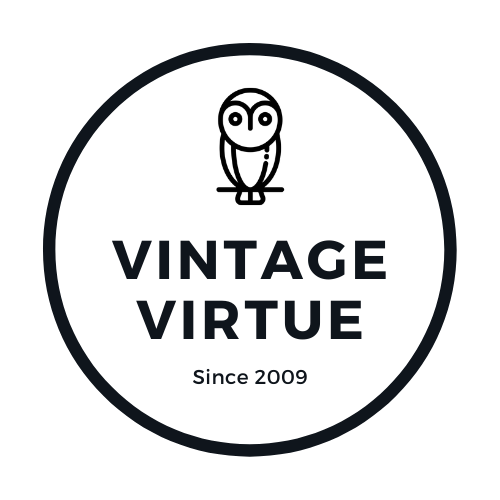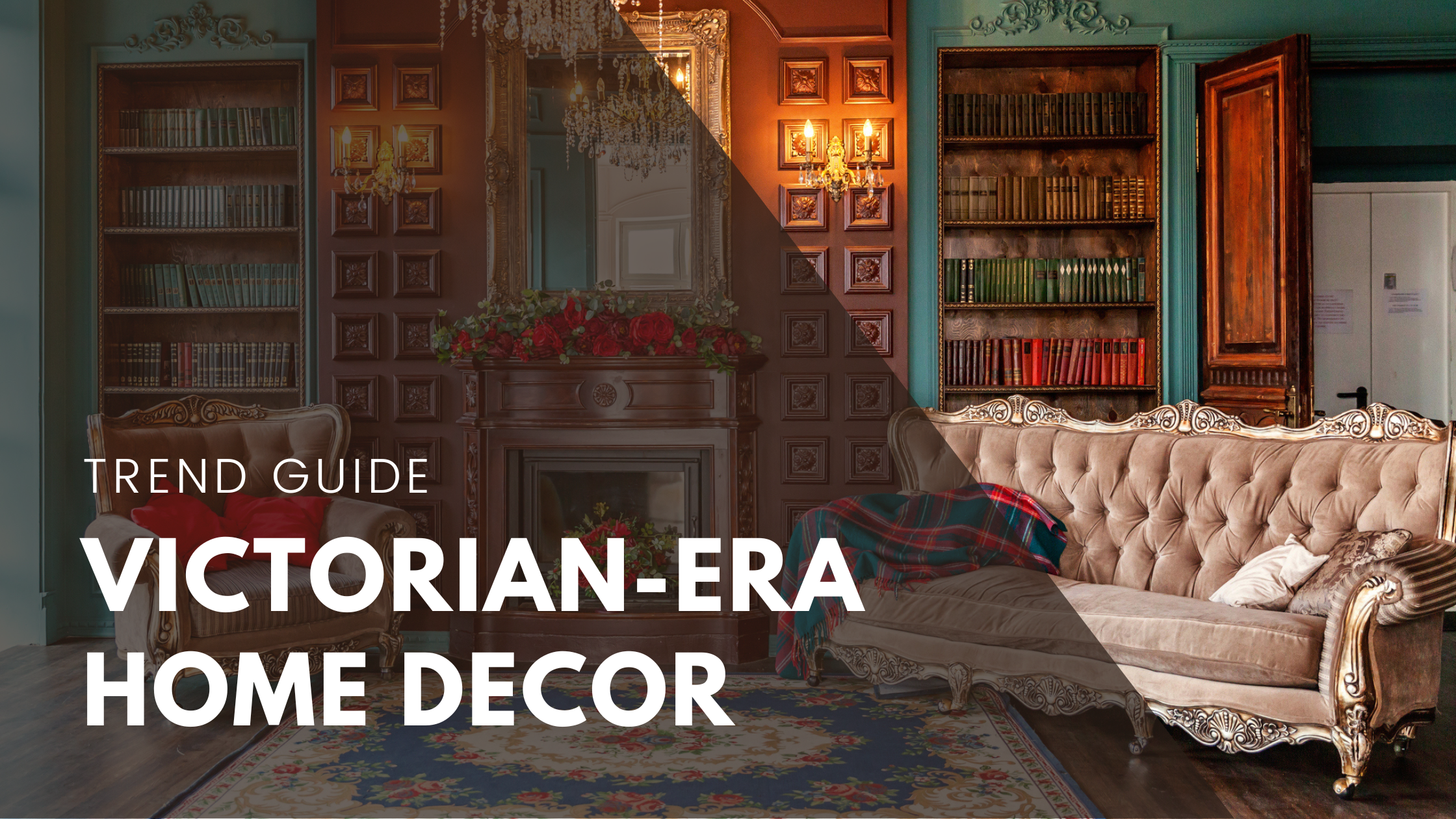Victorian Era Home Décor Trends
From 1837 to 1901, the Victorian era was a time of significant change and innovation in home décor and design. From rich, dark colors to ornate furniture, Victorian décor was characterized by luxury and attention to detail. During this time, floral patterns, velvet and brocade fabrics, fringe, tassels, and art collections were popular trends. In this blog post, we'll delve deeper into the fascinating world of Victorian home décor, exploring some of the most iconic trends. Whether you're a history buff or simply interested in adding a touch of Victorian elegance to your home, read on for a closer look at this captivating design era.
Rich, Dark Colors
Using rich colors in Victorian home decor created a sense of opulence and luxury. Dark, rich shades of red, green, blue, and gold were standard on walls, upholstery, and drapery. Deep, saturated hues trended over pastels or muted colors.
In addition to the walls and fabrics, the Victorian home incorporated colorful accents through accessories such as stained-glass windows, ornate chandeliers, and decorative vases. These accents were often made from materials like brass, copper, or bronze and were used to add a touch of elegance and sophistication to the space.
Ornate Furniture
Furniture in the Victorian era was often elaborate and ornate, with intricate carvings, scrollwork, and other decorative details. Sofas and chairs had curved backs and scrolled arms, while complex inlay work was used on tables and cabinets. Victorian furniture designs offer a wide variety, with each piece influenced by its specific revival. These designs are easily identifiable by the iconic features that make them authentic to their time.
Gothic Revival
Inspired by the medieval architecture of the 12th and 13th centuries, Gothic Revival furniture is decorated with ornate carvings, curved lines, and intricate inlaid designs of materials like brass and mother-of-pearl. It was also known for its spires, finials, and tassels. The furniture is often made with dark woods like oak and mahogany and upholstered in luxurious materials like velvet or brocade. Despite the ornate design, Gothic Revival furniture was also practical, often serving several functions, such as a bookcase with a desk or a cabinet with a washstand. This practicality made it perfect for both grand and modest homes.
Jacobean Revival
In the 1870s, the Jacobean Revival emerged by combining factory-made furniture with the Jacobean period. The furniture designs were adaptations of 17th-century Jacobean strapwork, characterized by wide, flat details with ornamental molding. The famous pieces of this era included whatnots (freestanding decorative shelves), spindled chairs, circular tables, and storage chests. Fabrics featured dramatic nature scenes, rich patterns, and florals. However, the Jacobean revival style emphasized rigid, solid-looking pieces with incised ornamentation.
Floral Patterns
Floral patterns were incorporated into various elements of Victorian home decor, including wallpapers, fabrics, carpets, and furniture. These patterns were often large and intricate, featuring a mix of flowers, leaves, vines, and other botanical elements.
The types of flowers used in Victorian home decor varied, but some of the most common were roses, lilies, daisies, and chrysanthemums. These flowers were often depicted in a naturalistic style, with great attention to detail and color.
In addition to being beautiful, floral patterns in Victorian home decor were also seen to bring the outdoors inside, creating a sense of nature and tranquility in the home. They were also used to add a feminine touch to interior design, as the Victorian era was a time when femininity in design and art was highly valued by society.
Velvet and Brocade Fabrics
Velvet was a popular choice for upholstery, curtains, and bedding. Its soft, plush texture and rich colors made it perfect for creating a cozy and inviting atmosphere. Velvet in deep, rich burgundy, emerald green, and navy blue added to the luxurious feel of the fabric.
Brocade was another popular fabric in Victorian home decor and often used for curtains, upholstery, bedding, and decorative pillows and throws. Brocade featured intricate patterns woven into the fabric, often with metallic threads or other embellishments.
Like velvet, brocade was used in rich, deep colors such as gold, burgundy, and navy blue. The intricate patterns and rich colors of brocade added a sense of sophistication and elegance to any room.
Together, velvet and brocade fabrics were a perfect match for Victorian home décor as they added a sense of luxury, elegance, and comfort to the home while also reflecting the wealth and status of the homeowner.
Fringe and Tassels
Overall, the use of fringe and tassels in Victorian home decor added a touch of elegance, texture, and ornamentation to the home. These embellishments were also used to add texture and depth to furniture, upholstery, and window treatments.
Fringe was often used on upholstered furniture, such as sofas and chairs, to add a decorative trim around the edges. Fringe was typically made from silk, cotton, or wool and came in various colors and styles, including twisted, beaded, and looped.
Tassels were typically made from silk, wool, or cotton and were often used on curtains, pillows, and decorative throws. Tassels were available in various colors and styles, from simple and understated to elaborate and ornate.
In addition to adding decorative flair, fringe, and tassels were also used to conceal seams and edges. They were often used with other decorative elements, such as brocade or velvet fabrics, to create a cohesive and luxurious look.
Artistic Objects and Collections
Victorians had a fascination with collecting and displaying objects worldwide. Many homeowners used these collections to create a sense of sophistication and worldly knowledge.
Artistic objects such as sculptures, paintings, and vases were often displayed prominently in the home. These objects were ornate and highly detailed, often featuring intricate patterns or motifs. They were used to add visual interest to the room and to demonstrate the homeowner's appreciation for art and culture.
Collections of objects such as figurines, books, and taxidermy animals were also popular in Victorian home decor. These collections, displayed on shelves or in cabinets, were designed to be admired and appreciated for their beauty and rarity.
Oriental Influences
Many homeowners were fascinated by the exoticism and richness of Asian cultures and incorporated these elements into their interior design to add a sense of luxury and sophistication to the home.
One of the most notable ways oriental influences were incorporated into the Victorian home was through Chinese and Japanese motifs, used on wallpaper, fabrics, and ceramics, and included elements such as dragons, pagodas, and cherry blossoms.
Another popular way Victorians incorporated oriental influences into their home decor was through Asian-inspired furniture. This furniture often featured intricate carvings, lacquered finishes, and ornate details and was used to create a sense of luxury and exoticism in the home.
Oriental rugs were also a popular addition to Victorian home decor. These rugs were typically made from wool or silk and featured complex patterns and designs and used to add color, texture, and visual interest to the room.
Victorian home decor trends were all about creating a sense of luxury and sophistication. Many of these trends continue to inspire interior designers, who look to Victorian decor for inspiration when creating spaces rich in history, personality, and style. Whether you are a fan of the intricate details and patterns of Victorian decor or prefer a cleaner and more modern take on interior design, there is no denying this era's lasting impact on home decor.






